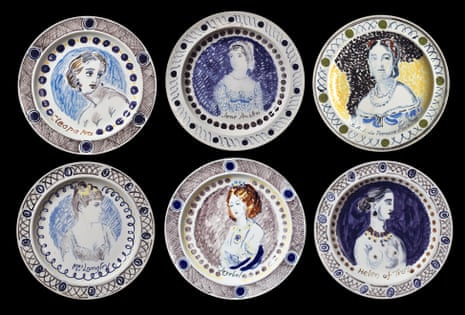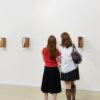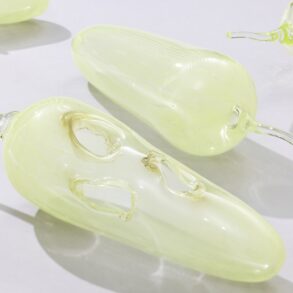It’s a fantasy dinner party for the ages: Queen Victoria seated between Pocahontas and Cleopatra; Catherine the Great sharing a table with Helen of Troy. This was the vision behind the so-called Famous Women Dinner Service, a collection of hand-painted china plates, created in 1932 by Vanessa Bell and Duncan Grant, and soon to be displayed in full as part of a major exhibition of Bell’s work.
“There’s a huge appetite for overlooked female artists,” says Anthony Spira, director of the MK Gallery in Milton Keynes, where Vanessa Bell: A World of Form and Colour will open later this month, with the dinner service taking centre stage. “It’s such an important work – one of the great works of feminist applied art.”
Friends, lovers and lifelong collaborators, Bell and Grant were two of the most productive members of the Bloomsbury circle. Besides painting, they turned their hands to interior design, textiles, stained glass and even set design, initially through the commercial Omega Workshops, and later at Charleston, the Sussex farmhouse they transformed into a radical artistic retreat. Their unusual dinner service was originally commissioned by the young curator Kenneth Clark, later to find fame as a TV historian, and comprises 50 large dinner plates, each featuring the painted portrait of a prominent woman from history or myth (and one man – Grant himself).
As varied as they are striking, the plates’ subjects range from historical heroines (Elizabeth I, the Queen of Sheba), to literary giants (Lady Murasaki, George Eliot) and modern celebrities including Greta Garbo and the 1933 Miss America. “They are in incredibly good condition,” says Spira, who co-curated the exhibition, “but their purpose was to be humble plates for eating off. To Bell, creativity isn’t a rarefied, intimidating action, it’s a part of everyday life.”

Besides their inclusive attitude to art-making, Spira identifies the reflection of Grant and Bell’s radical sexuality in the range of women chosen. “There’s a queer element,” he says, “a lot of the subjects are queer or led unconventional lives. Certainly [Bell and Grant] would have been particularly interested in lives attuned to their own.” Along with Garbo, Eleonora Duse, George Sand and Sappho are represented, women famed for living outside the conventions of gender and sexuality; others – Charlotte Brontë, Sarah Bernhardt, Lola Montez, Jezebel – represent a spirit of disobedience and independence that would have appealed to the two radical artists. Grant was bisexual, while Bell, like many of her Bloomsbury contemporaries, was in an open marriage and was committed to exploring alternative, communal lifestyles. In fact ceramic art seems to have held a special, sensual significance for Bell – after first experimenting with pottery in 1914, she wrote to Grant: “The feeling of clay rising between one’s fingers is like the keenest sexual joy.”
Perhaps thanks to prejudice against women as artists and artistic subjects – or perhaps because of what Spira calls a “hierarchy of culture” that has historically discriminated against applied arts as “lesser” than painting – the extraordinary artwork languished in obscurity until 2018, when it passed from private into public hands and was placed on display at Charleston, now a cultural centre.
Exhibited for the first time in a modern gallery setting, the Famous Women Dinner Service bears comparison to The Dinner Party, a 1979 installation by the American feminist artist Judy Chicago, now on permanent display at the Brooklyn Museum: a triangular dinner table with 39 place settings, each celebrating a different historical woman. While Chicago could not possibly have known about the earlier artwork when she created The Dinner Party, she acknowledges its significance in an essay written for the MK Gallery’s exhibition catalogue. Calling it “a unique and unknown body of art”, Chicago celebrates the Famous Women Dinner Service for demonstrating a “little-known aspect of women’s history: the desire to honour women”.
-
Vanessa Bell: A World of Form and Colour is at the MK Gallery, Milton Keynes, from 19 October t0 23 February 2025
This post was originally published on this site be sure to check out more of their content







